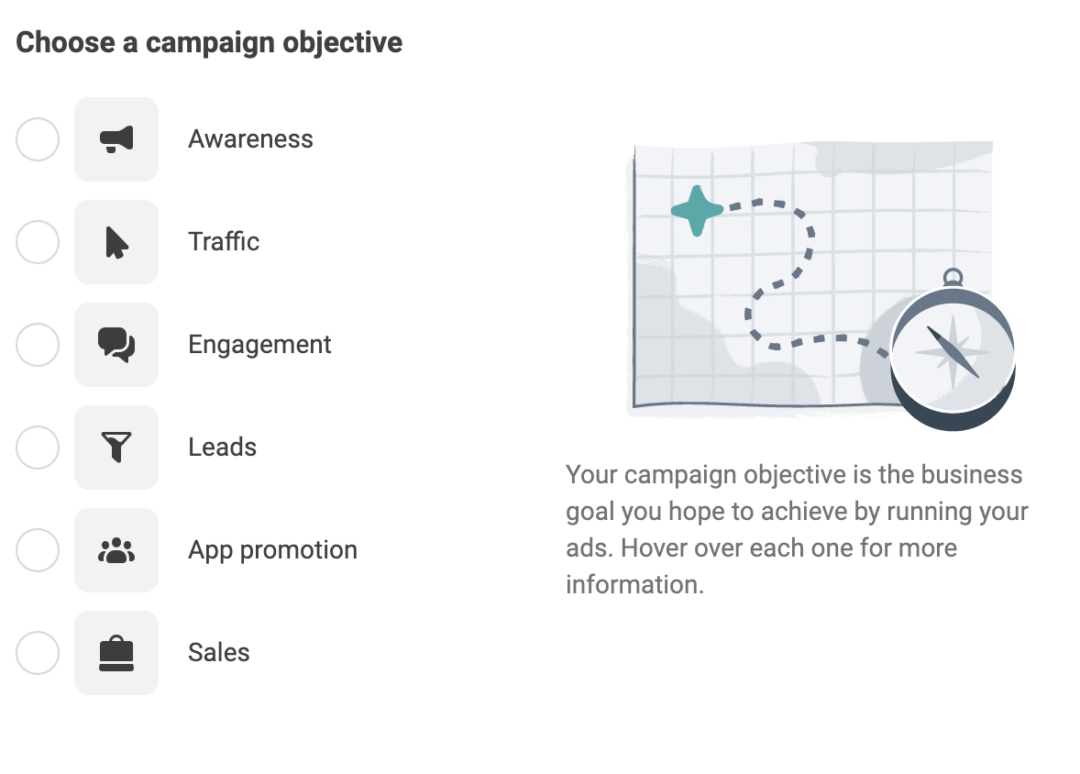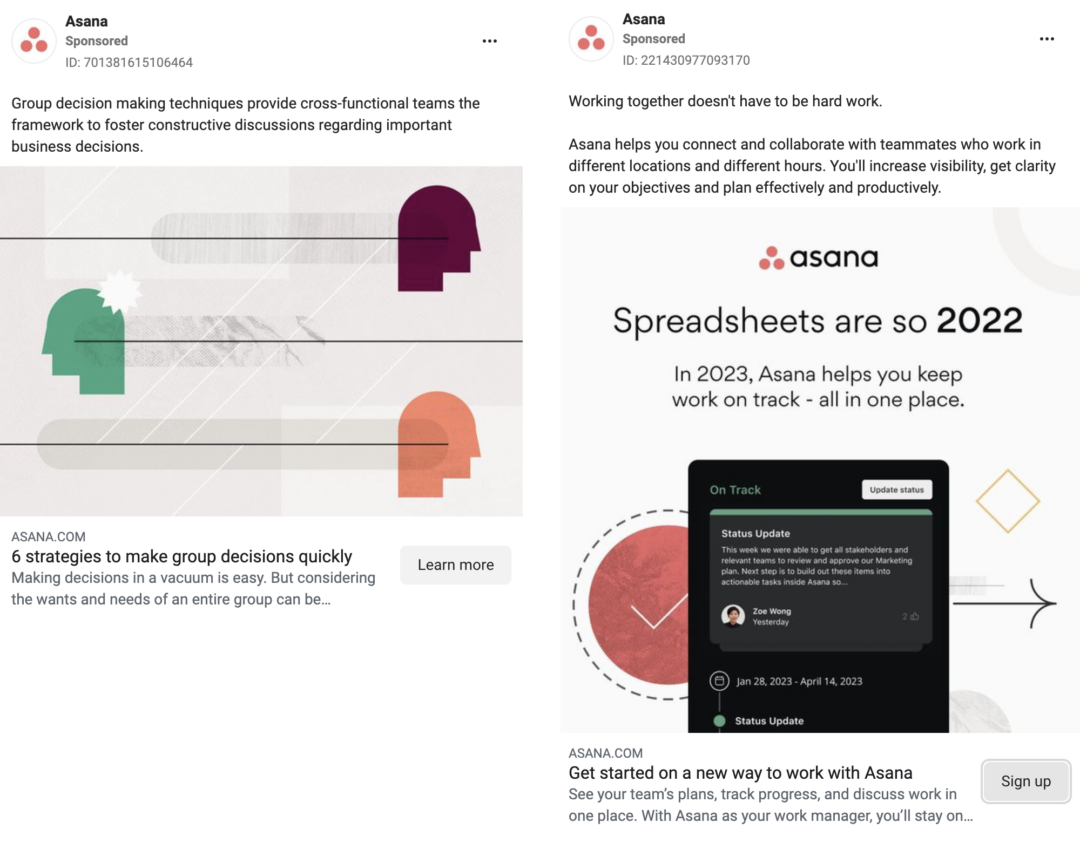Social
Distribution 101: The Content Marketer’s Guide to Facebook Ads Tips
Are you looking for ways to craft better Facebook ads that result in higher conversions? With the right strategies, paid Facebook advertising is an effective way to reach new audiences, engage with prospects, and get new leads.
But with so many options and variables, it can be easy to burn through your ad spend with minimal return.
Here are five Facebook ad tips that will help you maximize your ad performance and drive more conversions.
1. Choose the Right Campaign Type
Facebook ad campaigns come in various flavors, each tailored to specific goals. That’s why it’s important to consider your campaign’s objective before you get started with your Facebook ad campaign. Some questions to ask:
- Are you trying to build awareness, encourage engagement, or drive leads and sales?
- What metrics do you plan to measure?
- What would success look like for your campaign?
Taking the time to solidify your objectives before diving in will give you greater alignment as you build out your campaign.
Automated Ads
Automated ads are an efficient way to reach your target audience. This type of ad allows you to set up a campaign and then let it do the heavy lifting with minimal upkeep.
Facebook’s algorithm optimizes automated ad delivery, ensuring your message reaches the right people at the right time.
As long as your targeting details are on point, automated Facebook ads are the go-to choice for campaigns that don’t require constant fine-tuning or optimization.
Boosted Posts and Stories
Put your organic content to work with boosted posts and stories, a type of Facebook ad that amplifies the reach of existing content through paid campaigns. Embrace this strategy to breathe new life into your content and maximize its potential for audience engagement.
Boosted posts and stories are best for campaigns where you already have strong organic engagement, or if you want to quickly test out a post before investing in a more complicated Facebook ad format.

Content marketers can also use boosted posts and stories to reach new audiences, amplifying their content’s reach while still utilizing their existing assets.
Fully Customized Ads
Fully customized Facebook ads empower you with unparalleled control over your campaigns. These ads are ideal for campaigns that demand significant customization of visuals and messaging or target a highly specific audience or conversion objective.
Marketers should embrace the flexibility of fully customized Facebook ads to incorporate multiple creative elements, such as images, videos, carousels, and more.
Content marketers should use fully customized Facebook ads when they want to create an impactful and engaging experience for their audiences.
2. Determine Your Target Audience
One of the most valuable Facebook ad tips is to determine your target audience correctly. Knowing who you’re trying to reach will help you create ads that resonate with them and drive conversions.
Although it’s tempting to aim for a wider reach, narrowing down your audience ensures you’re not wasting ad spend showing ads to people who will never convert.
Keep Your Audience’s Awareness Level and Buyer Journey Stage in Mind
When defining your target audience, don’t forget to consider their level of awareness and where they are in the buyer journey stage. For example, if you’re advertising a product that’s unfamiliar to most people, you’ll want to craft an ad that presents the product in a straightforward and engaging way.
On the other hand, if your audience is already aware of what you’re promoting, you can focus on ads that highlight your product’s value and benefits. Understanding these elements will help you fine-tune your Facebook ads to your specific target audience.

As you’re creating your Facebook ads, select a campaign objective that will improve audience targeting and ensure your ads align with the desired action you expect visitors to take.
Align Your Offers with Your Audience’s Needs
Matching the offer in your Facebook ad with the viewer’s buyer journey stage is crucial for boosting conversions because your target audience has different needs at different stages of the buying journey.
For instance, someone just becoming problem aware is likely more drawn to educational content that helps them understand the issue, while someone ready to make a purchase is more interested in a special offer or discount.

For example, Asana has a top-of-funnel ad promoting a topical blog post as well as mid- and bottom-funnel ads promoting their product with a call-to-action to sign up for a trial.
By aligning your offer to the viewer’s buyer journey stage, you can address their needs directly and heighten the chances of a conversion. For instance, targeting people in the consideration stage with a free trial or product demo is more impactful than a direct sales pitch. This tactic fosters trust and positions your brand as a valuable resource.
3. Craft Captivating Ad Messaging and Visuals
When it comes to creating a successful Facebook ad, writing engaging messaging is vital. The platform offers several ad formats, each with its unique specifications.

Compose messaging that is crisp, succinct, and addresses your target audience’s needs directly. Focus on various components of a Facebook ad when crafting your messaging, such as the primary text, headline, and description.
Ensure your ad visuals—like images or videos—harmonize with your messaging to capture the viewer’s attention and convey your offer effectively.
Opt for eye-catching and relevant imagery that embodies your product or service and mirrors your brand’s style and tone. Feature images or videos that demonstrate your product or service in action, emphasizing the core benefits.
Steer clear of generic stock photos that may fall flat with your target audience. It’s important to ensure that the visuals complement the messaging and work together to create a cohesive and impactful ad.
4. Set Your Initial Budget
Allocating a budget for your Facebook ad campaign is a crucial step in ensuring that your ad reaches your target audience effectively without overspending. When determining your budget, take into account:
- Overall campaign goals
- Target audience size
- Anticipated ad reach
- Average customer order value or lifetime value
One way to calculate the cost of a lead or customer is to use the Cost Per Lead (CPL) or Cost Per Acquisition (CPA) metrics. CPL refers to the cost of generating a lead through your ad, while CPA refers to the cost of acquiring a new customer.
To calculate the CPL or CPA, divide the total cost of your ad campaign by the number of leads or customers generated. By tracking these metrics, you can determine the effectiveness of your ad campaign and adjust your budget accordingly. If your CPL or CPA is higher than your target cost, you may need to adjust your targeting or ad messaging to improve your ad campaign performance.
It’s important, however, to evaluate these costs against the potential revenue each new customer could earn for your company to determine ROI. If your ad spend is low compared to the business each new customer brings in, increasing your ad spend could be an easy way to scale your business.
5. Analyze Your Results and Optimize for Greater Returns
To analyze your ad results, start by tracking key metrics such as click-through rates (CTR), conversions, and cost per conversion (CPC). This will give you an idea of how your ad is performing and whether it’s generating the desired results.
After pinpointing areas for improvement, consider adjusting your ad targeting, messaging, or visuals to boost conversions. For example, if your ad is generating many clicks but few conversions, you may need to improve your ad messaging to better align with your target audience’s needs.
Another powerful way to optimize your ad campaign is through A/B testing. Experiment with ad variations to identify which resonates most with your target audience. Test different ad images, headlines, or CTAs to uncover the winning combination.
Creating effective Facebook ads requires combining strategic planning, targeted messaging, and ongoing optimization. Remember to tailor your ads to your target audience’s needs and interests, align your offer with their buyer journey stage, and continuously analyze and optimize your ad performance. By following these five Facebook ad tips, content managers can maximize their Facebook ad campaigns’ impact and drive more conversions.
Sign up for The Content Strategist Newsletter to get content strategy tips delivered to your inbox weekly.
Image by FreepikGet better at your job right now.
Read our monthly newsletter to master content marketing. It’s made for marketers, creators, and everyone in between.




